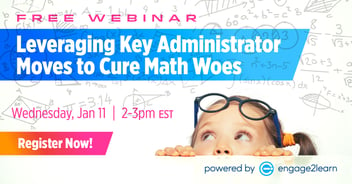Small Group Instruction is No Small Feat

According to Time Magazine, “When we free ourselves from the notion of one person delivering information at the front of a classroom at a set pace, it allows us to completely rethink our assumptions of what a classroom or school can be,” (2012).
In our modern era of public education, the one-size-fits-all approach is no longer sufficient. To develop Life Ready learners, small group instruction is paramount to meeting their diverse needs and ensuring the highest level of individual mastery – regardless of the grade level or classroom dynamic.
In our modern era of public education, the one-size-fits-all approach is no longer sufficient. Click To TweetAlso known as workshops, small group instruction can be a tall task for one to organize. Valid teacher concerns such as class size, instructional time, academic content, and mixed ability levels among students can further obscure this vital technique.
Yet, our e2L Best Practice Guide for Small Group Instruction notes that not all learners will need the same thing, and small group instruction is the ‘how’ for scaffolding and differentiation.
Small group instruction is the ‘how’ for scaffolding and differentiation. Click To TweetSo, where should teachers begin?
First, make your intentions clear to your students. Do they understand the desired outcome of this approach? Incorporate Formative Assessments so that the groups remain fluid, changing as student mastery develops.
Be purposeful when designing your small groups, and refer to our e2L Team Considerations.
Did you know that research suggests three to five students is ideal when conducting small group instruction?
Lastly, construct clear goals, standards, and protocols with student accountability factored in through reflective feedback.
Consider implementing these 10 easy steps of the Jigsaw Method, a proven cooperative learning system developed by Elliot Aronson and his students from the Universities of Texas and California. Renowned for breaking down cultural boundaries, the Jigsaw Method levels the playing field by making all students’ contributions essential to the collaborative learning experience.
Or explore these 18 Teacher-Tested Strategies for Differentiated Instruction developed by the Edutopia Community as a Cliffs Notes version of this considerable feat. Just keep in mind that small group instruction should be meaningful to each learner and give a voice to his or her unique needs.
Small group instruction should be meaningful to each learner and give a voice to his or her unique needs. Click To TweetNo matter which method you choose, get to know your students first and foremost!
Determine what motivates them, what challenges they face at home, and how they would like to learn. Posing the simple question, “What do you wish I knew,” could alter a student’s path to success entirely. His or her personal story is equally as important and as academic aptitude, and small group instruction has the potential to impact both emphatically.
Your mountain is waiting, so get on your way!



